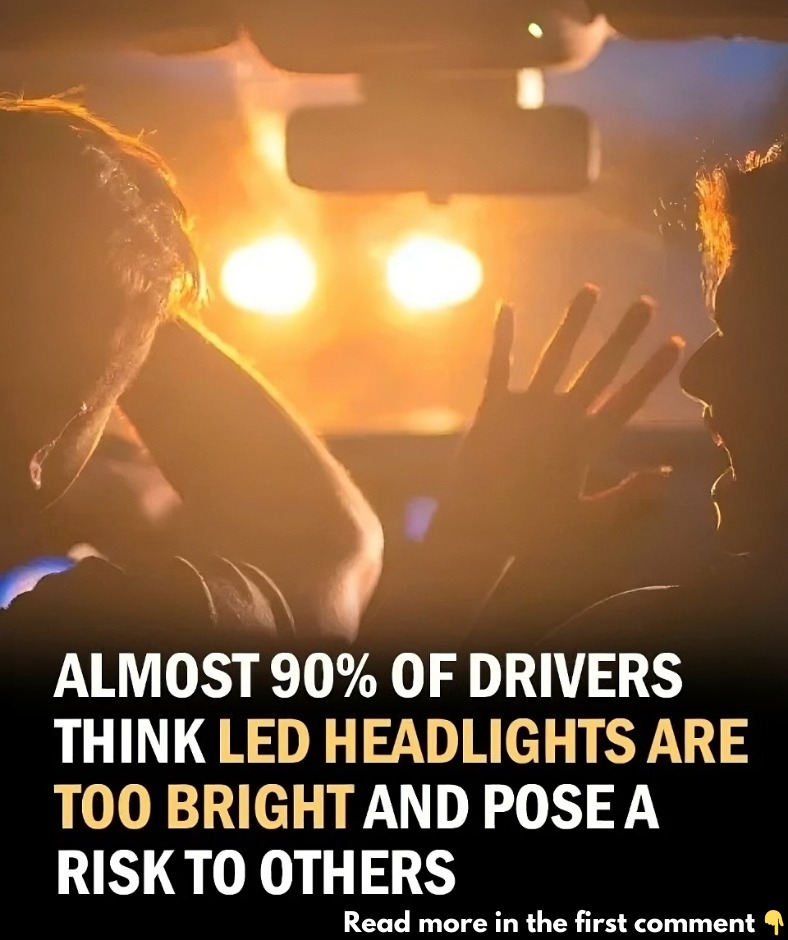
The Bright Light Problem
In the world of automotive innovations, LED headlights were hailed as a breakthrough, offering energy efficiency and superior visibility on the road. However, what was once celebrated as a game-changer in vehicle lighting has now become a point of frustration for many drivers. A growing number of motorists report that LED headlights are too bright, causing discomfort and raising safety concerns, especially during nighttime driving. But what’s the cause of this issue, and how can it be addressed?
Why LED Headlights Are Causing So Much Frustration
LED headlights provide brighter and clearer illumination, which is excellent for drivers, right? Well, not exactly. While these lights enhance visibility for the driver, they also cast a harsh glare for oncoming traffic. This intense brightness has left many drivers squinting or even temporarily blinded during night drives.
A survey conducted by the RAC in the UK revealed that a staggering 89% of drivers believe LED headlights are too bright, and 85% feel that the glare has worsened in recent years. It’s not just a concern in the UK—drivers across the globe share similar frustrations, raising the question: what’s going wrong with this once-celebrated innovation?
LED Headlights: The Benefits vs. The Drawbacks
LED technology revolutionized headlights for several reasons:
- Energy Efficiency: LED bulbs consume less power than traditional halogen lights, reducing energy consumption in vehicles.
- Longevity: LEDs are durable, often lasting much longer than halogen bulbs, which means fewer replacements.
- Enhanced Visibility: The focused beams of LED lights make nighttime driving safer by illuminating further down the road.
However, these advantages come with some significant downsides, particularly the overwhelming brightness of LED lights. The piercing beams often cause discomfort for other drivers, especially when oncoming vehicles are using high-beam LEDs.
The Science Behind LED Brightness
LED lights are brighter because they produce light more efficiently than halogen bulbs. While this is beneficial for the driver, it’s also what creates the glaring issue for other road users. The concentrated beam of light can be blinding, particularly for those driving in smaller vehicles or on poorly lit roads.
Additionally, misalignment of LED headlights can further amplify the problem. When headlights are not properly aligned, the beam of light may not only shine inappropriately toward oncoming vehicles but also create dangerous situations on the road.
Misalignment: The Silent Contributor to Glare
One of the main contributors to the LED glare issue is misalignment. When a vehicle’s headlights are improperly adjusted—often on larger vehicles such as SUVs and trucks—the light beam becomes more focused and directed toward other drivers, causing intense glare.
Mark Rea from the Light and Health Research Center points out that roughly 20% of vehicles have misaligned headlights, which exacerbates the problem. Misalignment doesn’t just cause discomfort; it increases the likelihood of accidents because of the blinding effect, reducing visibility for drivers and decreasing reaction times.
Real-World Impact of LED Brightness
The consequences of LED headlights being too bright are not just theoretical. Drivers have reported experiencing slower reaction times when confronted with intense headlight glare. Many people reduce their speed or avoid driving on poorly lit roads altogether to cope with the discomfort.
Increased Dependence on Night Driving Glasses
In response to this issue, many drivers have turned to specialized night-driving glasses to reduce the glare from LED headlights. These glasses can provide some relief, but they don’t solve the core issue. Instead, they simply act as a temporary fix, masking the problem rather than addressing the root cause.
Regulatory Gaps in Headlight Brightness
Despite the concerns, current regulations on headlight brightness are inadequate. Experts argue that existing guidelines for LED headlights are not strict enough and fail to account for real-world driving conditions. For example, many cars are manufactured with headlights that meet regulatory standards but still cause significant discomfort for other drivers.
Advocacy groups and experts are calling for stronger regulation from bodies like the National Highway Traffic Safety Administration (NHTSA) to create standards that better address the actual dangers associated with LED headlights.
What Can Be Done to Improve the Situation?
There are several potential solutions that could help mitigate the negative effects of LED headlights.
Adaptive Lighting Systems
One promising solution lies in adaptive lighting technologies. These advanced systems automatically adjust the brightness and direction of headlights based on factors such as road conditions, vehicle speed, and the presence of oncoming traffic. These systems are still relatively rare, mainly due to their high cost and limited adoption in vehicles, but they show promise in reducing glare.
Headlight Alignment Maintenance
A simpler and more immediate solution is to ensure that headlights are properly aligned. Regular vehicle maintenance, including headlight alignment, can significantly reduce the glare emitted by misaligned lights. Vehicle owners are encouraged to take their cars to a mechanic for regular check-ups to ensure their headlights are correctly adjusted.
Stricter Manufacturing Standards
Another solution is for automotive manufacturers to design headlights with stricter controls on beam angles and brightness levels. This would help balance the need for strong illumination with the comfort and safety of other drivers on the road.
What Drivers Can Do to Reduce Glare
Until broader solutions are implemented, drivers can take steps to reduce glare for others on the road. Here are some helpful tips:
- Check Headlight Alignment: If your vehicle’s headlights are misaligned, consider having them professionally adjusted to avoid blinding other drivers.
- Use Low Beams When Appropriate: In well-lit areas or when driving behind another vehicle, switch to low beams to minimize the impact of your headlights on other drivers.
- Avoid Aftermarket LED Bulbs: If you’re replacing your car’s headlights, avoid overly bright aftermarket LEDs that could further intensify glare.
Conclusion: Finding a Balance Between Visibility and Comfort
LED headlights have undoubtedly improved visibility for drivers, but their excessive brightness has raised significant concerns. As the automotive industry moves forward, finding solutions that balance the need for clear nighttime visibility with the comfort and safety of other drivers will be essential. In the meantime, both manufacturers and drivers must work together to ensure that our roads remain safe for everyone.





